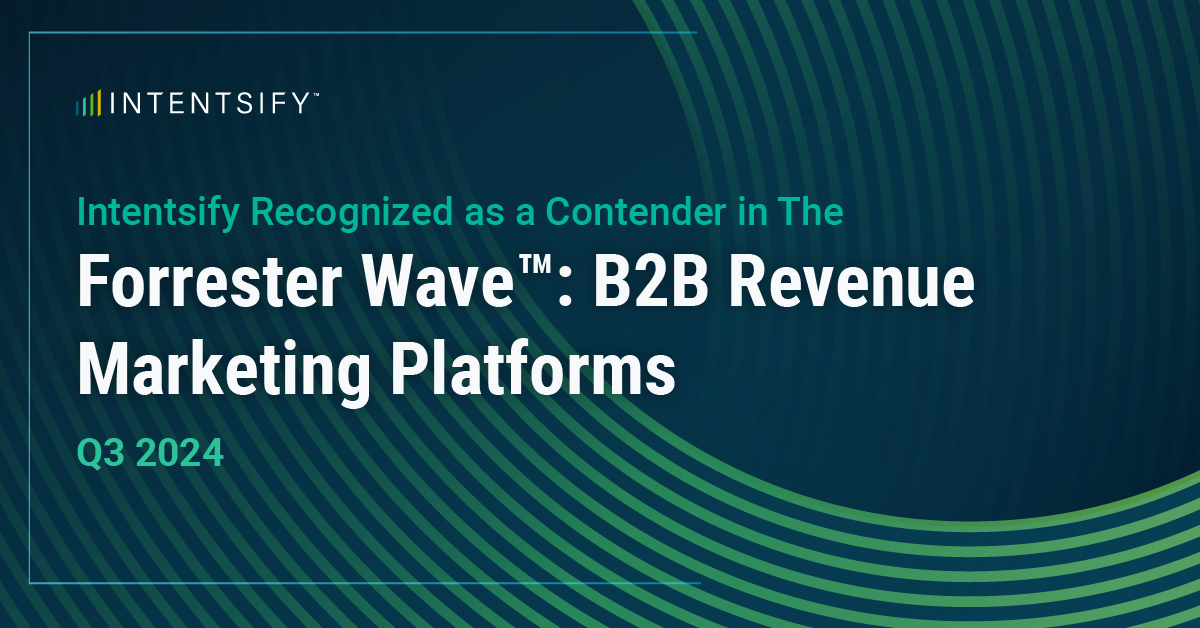Account-based marketing (ABM) was never about just marketing. From its inception many years ago, ABM practitioners and advocates knew that its success depended on sales team involvement, too.
Marketing teams needed sellers’ input to define target-account characteristics (if not the accounts themselves). Further, sales and marketing teams had to agree on goals, engagement tactics, messaging, scoring models, and more.
Over the years, however, the rapid digitization of both marketing and sales efforts has resulted in greater intra-departmental specialization. In fact, in a byline article I wrote nearly five years ago, I discussed how the proliferation of marketing technology was both a cause and effect of more specialized marketing roles. This has had a significant impact—both good and bad.
The good: marketers and sellers have honed their skills around specific responsibilities and tactics, using key technologies to increase efficiency and efficacy.
The bad: Such specialization has divided marketing departments into a range of differentiated functions, in effect creating much dreaded siloes.
This makes collaboration for account-based initiatives difficult. As Ashley Cohen, Co-founder of at B2B marketing consultancy Tenx4, says:
Account-based marketing isn’t a tactic. It can’t be stuck in a silo with its own distinct KPIs. It must align with business goals and be both driven and supported by numerous roles within and beyond marketing. That requires a lot of cross-team team coordination. This is why the industry is moving away from ABM to ABO.
ABM Matures Into Account-Based Orchestration
More recently (within the last few years), a growing number of business leaders have been decrying “account-based marketing” as a hazardous misnomer. As Jess Weimer, Vice President of Global Revenue Marketing at Confluent, recently wrote in an Intentsify blog post ABM orchestration:
Account-based marketing (ABM) is a concept already set up with a misperception: that it’s solely marketing’s responsibility to orchestrate account-based plays…
“That’s why I prefer to label it account-based orchestration (ABO) or account-based ‘go-to-market’; it’s not just on marketing—company-wide adoption is required to successfully orchestrate an account-based approach.
Jess rightly argues that, beyond just marketing and sales, organizations must effectively coordinate the efforts of customer success and partners as well.
Unfortunately, specialization within each of these functions means that business leaders charged with driving account-based strategies must orchestrate the efforts of many different functions, including:
- Product marketing
- Customer marketing
- Demand generation/growth marketing
- Marketing operations
- Digital marketing
- Sales development
- Field sales
- Sales operations
- Partners
- Customer success
Coordinating all these roles to support one holistic strategy is no easy endeavor. In fact, an Ascend2 survey from November of 2019 found that “Improving marketing/sales alignment” was tied for the No. 1 “most critical challenge for an ABM strategy to achieve.”
I imagine “aligning” all the necessary stakeholders (beyond just marketing and sales) is even more difficult today. As organizations transition to the new work-from-home environment, they’re having to continuously test and refine new approaches to remote collaboration.
Fortunately, many marketing leaders have been dealing with the challenge of orchestrating cross-functional account-based programs for some time now. And I’ve asked a few of these leaders to provide their insights on how best to approach the collaboration issue.
How to Align all Teams Behind ABO
Recognize There’s No One-Size-Fits-All Approach to ABO
Cynthia Berger, Director, Global Marketing Programs, Lucidworks:
Transitioning from ABM to ABO is a fantastic challenge for people who love orchestration and erecting globally scaled systems. Where I’ve seen marketing leaders misstep, however, is in underestimating the need to tailor their account-based roadmap to their specific business. I’ve yet to see cookie-cutter ABM (much less ABO) work in any organization at any level of scale, regardless of the exuberance of the champion driving it.
Form an ABO Committee
Sabrina Galati, Co-founder, Tenx4:
When trying to foster collaboration across a client’s multiple groups, I always first try to assemble a small team composed of either representatives from various groups/departments or main organization decision-making leaders. This sets the stage for all-important unification, facilitating collaborative decision-making and workflows very early on.
Establish a Picture of ABO Success
Sabrina Galati, Co-founder, Tenx4:
Once you have dedicated, unified team, it’s important for the entire group to agree to final objectives, first and foremost. Establish what the end result should be—the organization-wide goals and objectives for your account-based strategy. We’ve found early buy-in and agreement around a few foundational goals is absolutely key to establishing cross-team collaboration.
Jessica Fewless, Client Partner, Inverta:
Make sure all the key functions are focused on the same objectives: new accounts, increasing close rates, expansion within existing accounts, etc. Then include all functional leaders/representatives in the planning process of your strategy. If they are involved in the planning, they’ll be invested in the success. And then lastly to seal the alignment, make sure the KPIs each team is incentivized by are aligned with achieving the agreed upon goals.
Define Roles and Responsibilities
Sabrina Galati, Co-founder, Tenx4:
After aligning on goals, objectives, and KPIs, we work to define roles within the group. We try to clearly articulate who will be leading various aspects of the project, and how each of those aspects will support the final objective. With an assigned role, each group member knows that the group’s final objective is contingent on the completion of their task. This system has worked for me in establishing collaboration early on without push-back from the group.
Document Your Progress
Jess Weimer, Vice President of Global Revenue Marketing, Confluent:
Bringing all the functions together is no easy task. It requires frequent and transparent communication. Documentation is key. From the outset, share the framework, share the journey of how all the pieces will fit together and when. Don’t let it stop there! Keep everyone informed on measurement, progress, and any red flags. Expect to learn continually and augment your initial strategy based on those learnings.
Maintain Frequent Communication
Kate Athmer, Senior Director of Growth Marketing and Sales Development, Bombora:
Dare to schedule calls without a rigid agenda, to replicate those hallway or happy hour conversations we’re missing now. Twice a month I have a ‘Rosé and Hey’ call with our head of sales late in the day that usually involves 5-10 minutes of tactical catch-up followed by 45 minutes of brainstorming. We’ve solved big problems and generated big ideas this way. Undetermined how much the rosé helps ideas flow, but it’s the only truly planned portion of the call.
Collaborate With External Partners
Cynthia Berger, Director, Global Marketing Programs, Lucidworks:
The road to ABO success is loaded with myriad, challenging detours. I often rely on external thought partners — B2B marketing peers, industry analysts, consultants, and even customers and prospects — to help me twist a problem into a solution. They help me clarify the challenge and its possible root causes, so I know where to dig. Thought partners are like gold — and are far more willing to help than most people think. I then take the relevant external guidance back to our internal team, where we use it in a collaborative way to update our roadmap and get back on track.
Improving skills to master tactical execution is incredibly valuable. Yet business leaders (especially marketers tasked with directing account-based initiatives) must not allow their various teams to miss the ABO forest for the ABM trees.






